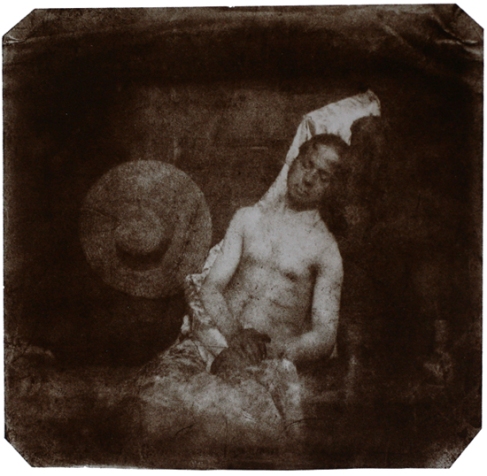Hippolyte Bayard
b. 1801, d. 1887
photographer
French
Hippolyte Bayard: Self-Portrait as a Drowned Man, 1840
(Direct Positive Print) 1840
“Experimenting during his time off from his job as a civil servant, Hippolyte Bayard purportedly invented photography earlier than Louis-Jacques Mandé Daguerre in France and William Henry Fox Talbot in England, the two men traditionally credited with its invention. Bayard was reportedly persuaded by a friend of Daguerre to postpone the announcement of his findings, thus missing the opportunity to be recognized as the inventor of the medium. In 1840 he responded to this injustice by creating perhaps the first example of political-protest photography, a portrait of himself as a drowned man, upon which he wrote:
The corpse which you see here is that of M. Bayard, inventor of the process that has just been shown to you. As far as I know this indefatigable experimenter has been occupied for about three years with his discovery. The Government, which has been only too generous to Monsieur Daguerre, has said it can do nothing for Monsieur Bayard, and the poor wretch has drowned himself. Oh the vagaries of human life…!
In fact Bayard did not drown himself but continued to photograph until his death nearly fifty years later. He was the first photographer to be granted a mission héliographique by the Commission des Monuments Historiques to document architecture in France.”
__________________________
José Gomes, 1913, fotografia, 30 x 21 cm, (Arq. Fot. CCC 141)
[ Instalação com participação humana, sem paralelo mundial pela sua antecedência histórica. Fotografia profissional, certamente encomendada pelo autor José Gomes, com este rodeado por latas e por finos ramos secos, com chapéu de tampa de lata e dizeres em papel repetindo a palavra “razon”]
Hospital Miguel Bombarda










